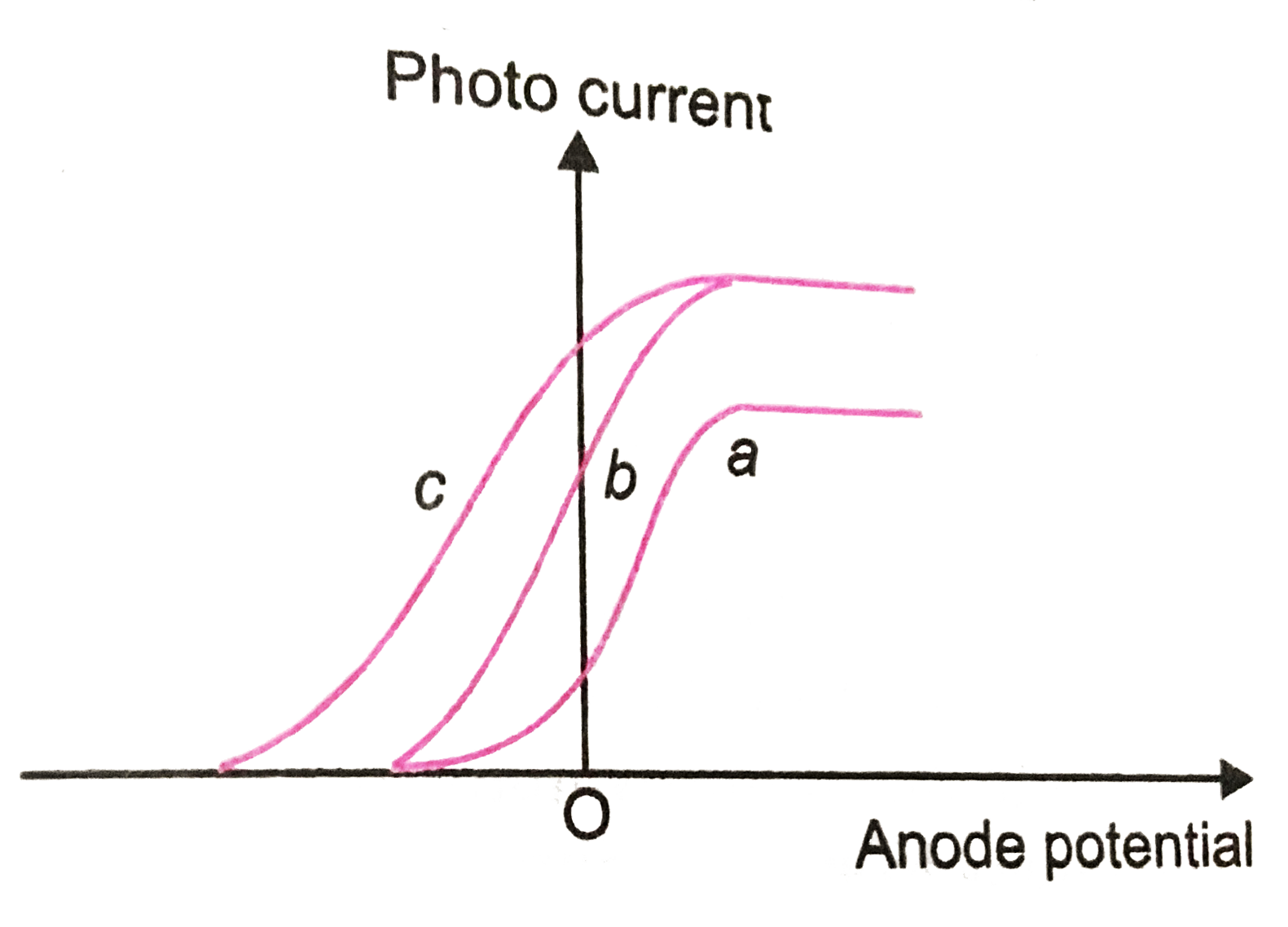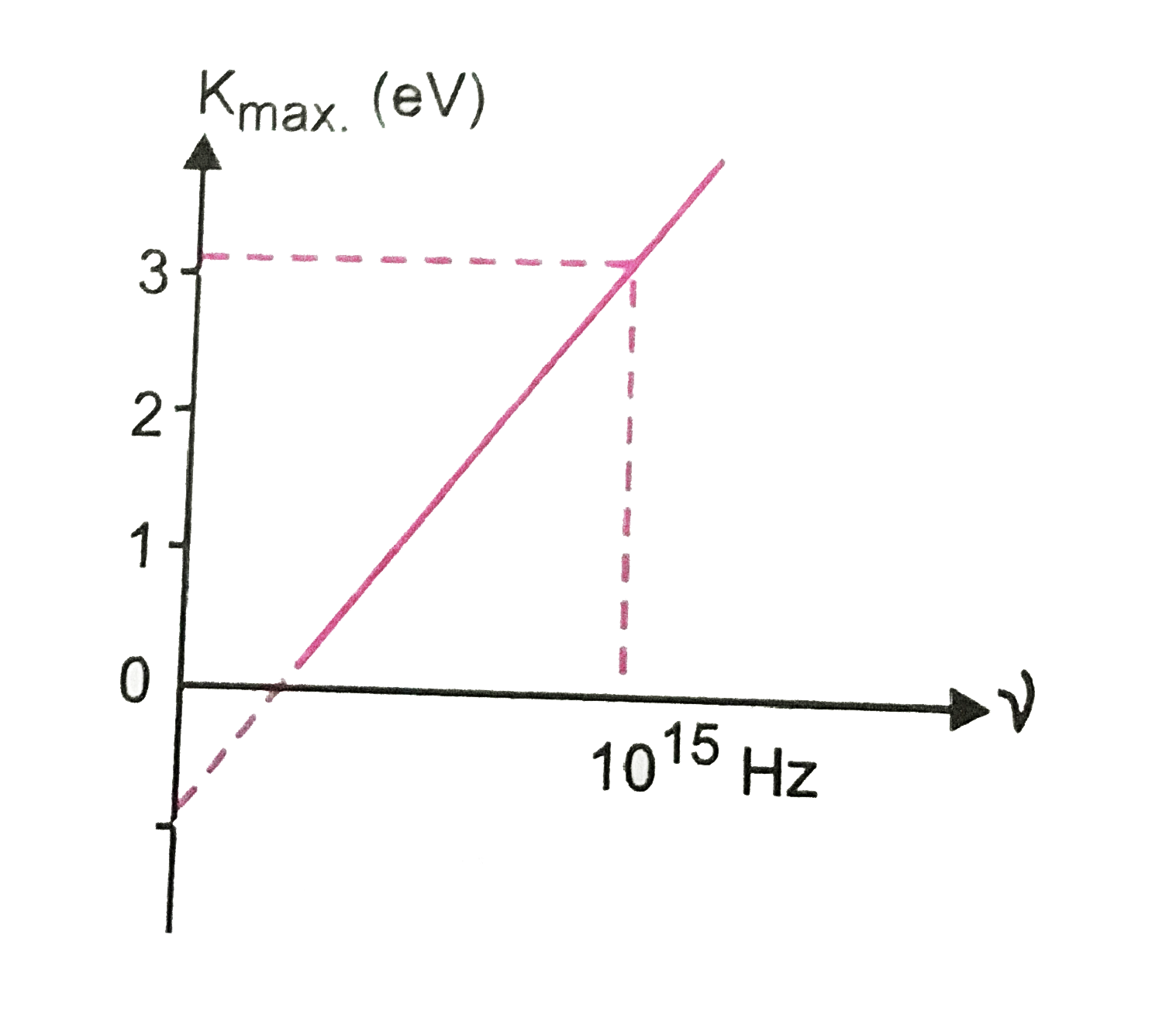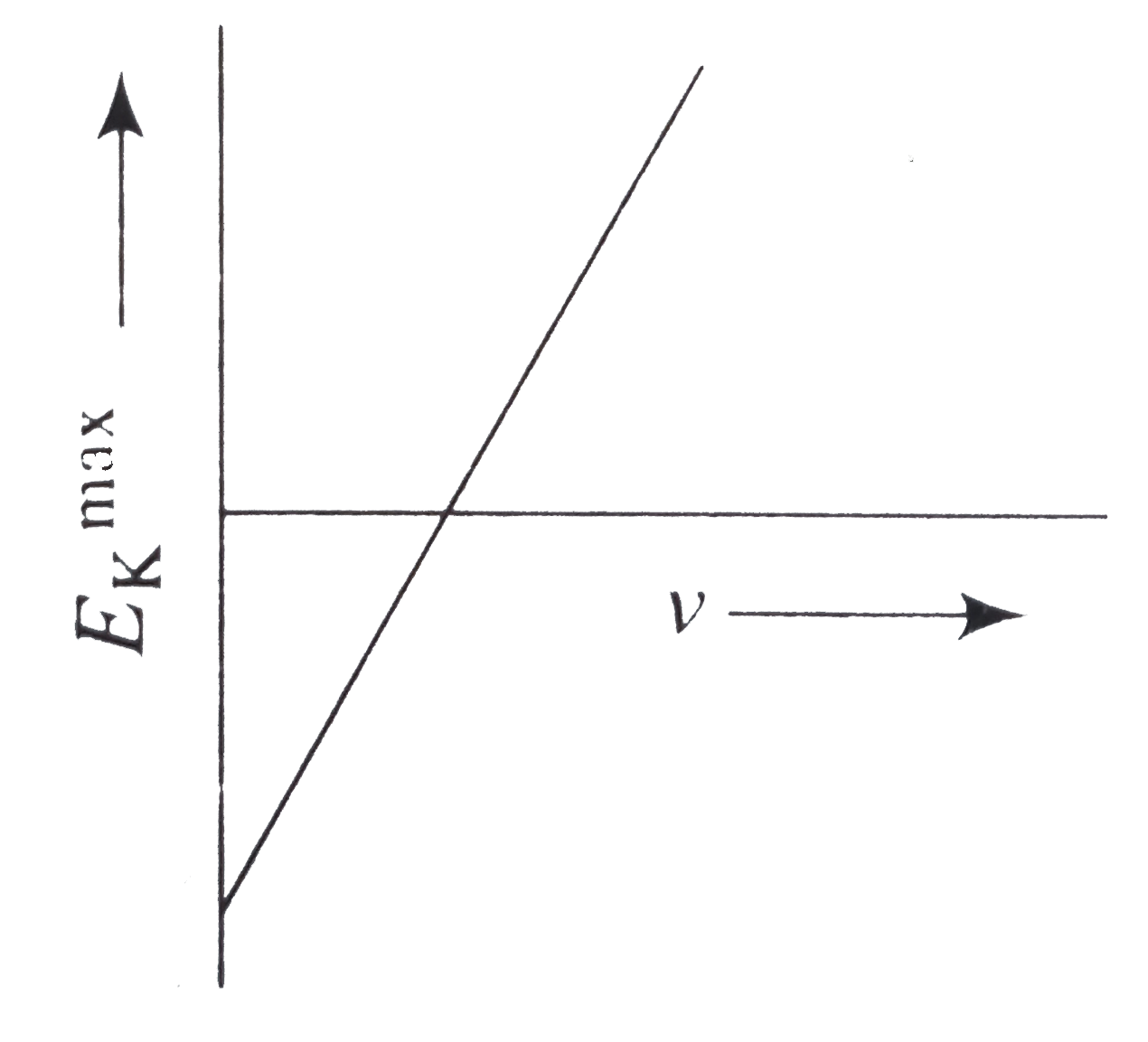Exercise from PRADEEP PHYSICS Chapter 4 DUAL NATURE OF RADIATION AND MATTER for Class 12
| Class 12 | PHYSICS |
| Chapter | DUAL NATURE OF RADIATION AND MATTER |
| PRADEEP PHYSICS | Exercise |
| Medium | English |
| Academic Year | 2023-2024 |
Question 32
Radiation of a certain wavelength causes electrons with a maximum kinetic energy of 0.65 eV to be ejected from a metal surface whose work function is 2.65 eV. What will be the maximum kinetic energy (in eV) with which this same radiation ejects electrons from another metal whose work function is 2.15eV.View SolutionQuestion 35
Light of wavelength 2000Å falls on an aluminium surface . In aluminium 4.2eV of energy is required to remove an electron from its surface. What is the kinetic energy , in electron volt of (a) the fastest and (b) the slowest emitted photo-electron . ( c) What is the stopping potential ? (d) What is the cut - off wavelength for aluminum? (Plank's constant h=6.6×10−34J−s and speed of light c = 3 xx 10^(8) m s^(-1).View SolutionQuestion 38
The work fuction of caseium is 1.8 eV. Light of 4500Å is incident on it. Calculate (i) the maximum kinetic energy of the emitted photoelectrons (ii) maximum velocity of the emitted photoelectrons (iii) if the intensity of the incident light is doubled, then find the maximum kinetic energy of the emitted photoelectrons. Given, h=6.63×10−34Js.me=9.1×10−31kg,c=3×108ms−1View SolutionQuestion 41
A photon of wavelength 3310Å falls on a photocathode and an electron of energy 3×10−19J is ejected. If the wavelength of the incident photon is changed to 5000Å, the energy of the ejected electron is 9.72×10−20J. Calculate the value of Planck's constant and threhold wavelength of the photon.View SolutionQuestion 42
Light of wavelength 180 nm ejects photoelectrons from a plate of metal whose work - function is 2 eV. If a uniform magnetic field of 5×10−5 T be applied parallel to the plate, what would be the radius of the path followed by electrons ejected normally from the plate with maximum energy.View SolutionQuestion 68
Given that a photon of light of wavelength 10,000Å has an energy equl to 1.23eV. When light of wavelength 5000Å and intensity I0 falls on a photoelectric cell and the saturation current is 0.40×10−6 ampere and the stopping potential is 1.36 volt, then (i)what is the work function? (ii) If intensity of light is made 4I0, what should be the saturation current and stopping potential?View SolutionQuestion 69
The maximum KE of photoelectrons emitted from a cetain metallic surface is 30 eV when monochromatic radiation of wavelength λ falls on it. When the same surface is illuminated with light of wavelength 2λ, the minimum KE of photoelectrons is found to be 10 eV. (a) Calculate the wavelength λ and (b) determine the maximum wavelength of incident radiation for which photoelectric emission is possible.View SolutionQuestion 70
When a beam of 10.6eV photons of intensity 2.0W/m2 falls on a platinum surface of area 1.0×10−4m2 and work function 5.6eV,0.53% of the incident photons eject photoelectrons. Find the number of photoelectrons emitted per second and their minimum and maximum energy (in eV).
Take 1eV=1.6×10−19J.View SolutionQuestion 71
When a surface is irradiated with light of wavelength 4950Å, a photocurrent appears which vanishes if a retarding potential greater than 0.6 volt is applied across the phototube. When a second source of light is used, it is found that the critical potential is changed to 1.1 volt.
if the photoelectrons (after emission form the source) are subjected to a magnetic field of 10 tesla, the two retarding potentials wouldView SolutionQuestion 87
A photoelectric surface is illuminated successively by monochromatic light of wavelength λ and λ2. If the maximum kinetic energy of the emitted photoelectrons in the second case is 3 times than in the first case , the work function of the surface of the material is
(h = Plank's constant , c = speed of light )View SolutionQuestion 95
When a certain metallic surface is illuminated with monochromatic light of wavelength λ, the stopping potential for photoelectric current is 3V0 and when the same surface is illuminated with light of wavelength 2λ, the stopping potential is V0. The threshold wavelength of this surface for photoelectric effect isView SolutionQuestion 106
A metal plate is exposed to light with wavelength λ. It is observed that electrons are ejected from the surface of the metal plate. When a retarding uniform electric field E is imposed, no electron can move away from the plate farther than a certain distance d. Then the threshold wavelength λ0 for the material of plate is ( e is the electronic charge, h is Planck's constant and c is the speed of light) View SolutionQuestion 109
Silver has a work function of 4.7 eV. When ultraviolet light of wavelength 100 nm is incident upon it, a potential of 7.7 V is required to stop the photo electrons from reaching the collector plate. How much potential will be required to stop the photoelectrons when light of wavelength 200nm is incident upon silver?View SolutionQuestion 110
In a photoelectric effect experiment, the maximum kinetic energy of the emitted electrons is 1eV for incoming radiations of frequency v0 and 3eV for incoming radiation of frequency 3v0/2. What is the maximum kinetic energy of the electrons emitted for incomming radiation of frequency 9v0/4?View SolutionQuestion 112
Photoelectric effect experiments are performed using three different metal plates p,q andr having work function ϕp=2.0eV,ϕe=2.5eVandϕr=3.0eV respectively A light beam containing wavelength of 550nm,450nm and 350nm with equal intensities illuminates each of the plates . The correct I−V graph for the experiment is [Take hc = 1240 eV nm]View SolutionQuestion 113
Given that a photon of light of wavelength 10,000Å has an energy equal to 1.23eV. When light of wavelength 5000Å and intensity I0 falls on a photoelectric cell and the saturation current is 0.40×10−6 ampere and the stopping potential is 1.36 volt, then (i)what is the work function? (ii) If intensity of light is made 4I0, what should be the saturation current and stopping potential?View SolutionQuestion 119
Ultraviolet light of wavelength 300nn and intensity 1.0Wm−2 falls on the surface of a photosensitive material. If one per cent of the incident photons produce photoelectrons, then the number of photoelectrons emitted per second from an area of 1.0 cm2 of the surface is nearlyView SolutionQuestion 126
An electron beam is acceleration by a potential difference V to hit a metallic target to produce X-rays. It produces continuous as well as characteristic X-rays. If λmin is the smallest possible wavelength of X-rays in the spectrum, the variation of logλmin with logv is correctly represented inView SolutionQuestion 139
The ratio of de - Broglie wavelength of α- particle to that of a proton being subjected to the same magnetic field so that the radii of their path are equal to each other assuming the field induction vector →B is perpendicular to the velocity vectors of the α - particle and the proton is View SolutionQuestion 152
Light of wavelength λphfalls on a cathode plate inside a vacuum tube as shown in the figure .The work function of the cathode surface is ϕ and the anode is a wire mesh of conducting material kept at distance d from the cathode. A potential different V is maintained between the electrodes. If the minimum de Broglie wavelength of the electrons passing through the anode is λe which of the following statement (s) is (are) true?
 View Solution
View SolutionQuestion 160
The graph between 1/λ and stopping potential (V) of three metals having work- functions Φ1, Φ2 and Φ3 in an experiment of photoelectric effect is plotted as shown in the figure. Which of the following statement(s) is/are correct? (Here, λ is the wavelength of the incident ray). (a) Ratio of work functions ϕ1:ϕ2:ϕ3=1:2:4 (b) Ratio of work functions ϕ1:ϕ2:ϕ3=4:2:1 (c ) tan θ is directly proportional to hc / e, where h is Planck constant and c is the speed of light (d) The violet colour light can eject photoelectrons from metals 2 and 3 .
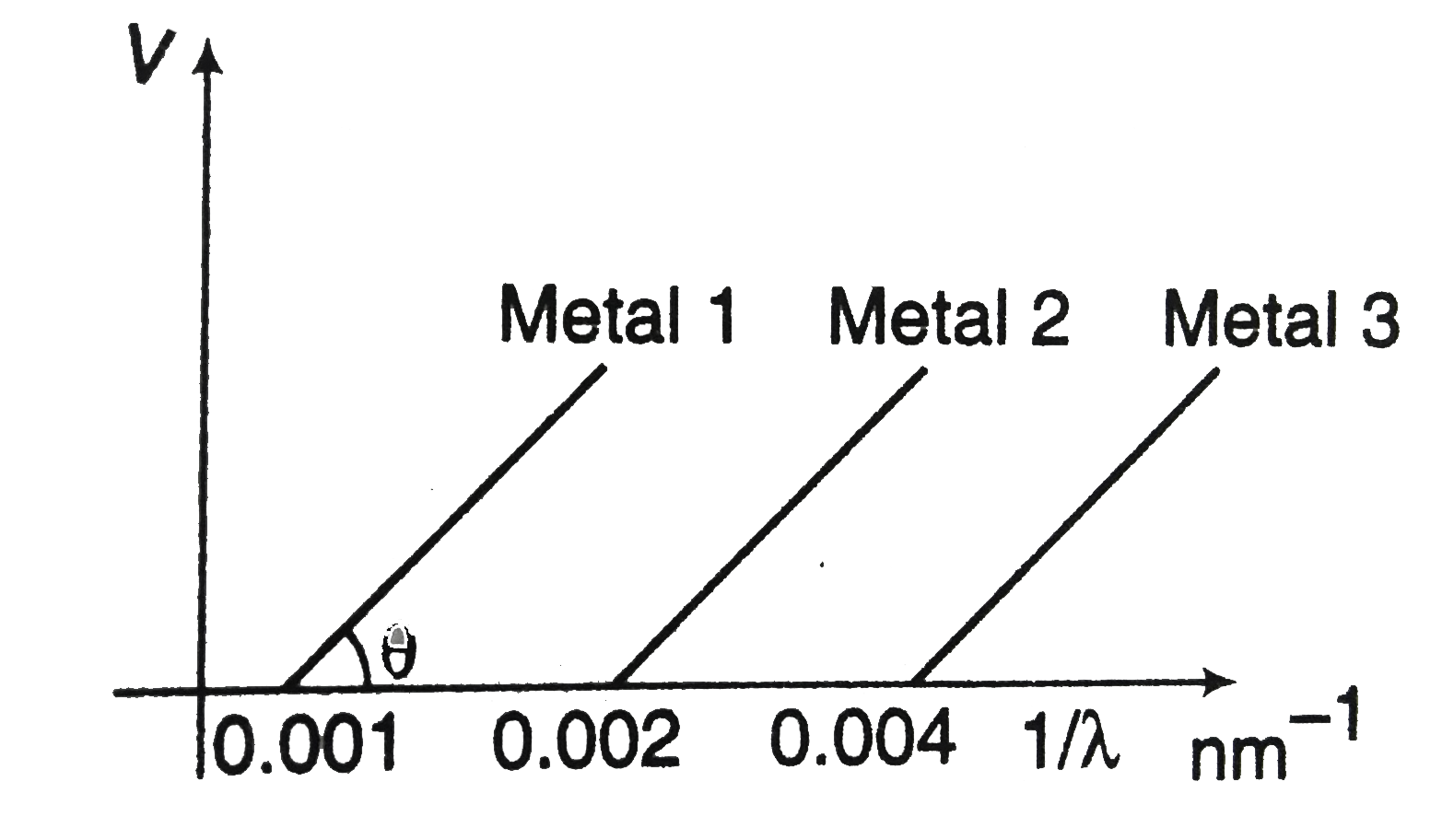 View Solution
View SolutionQuestion 166
Wave property of electron implies that they will show diffraction effected . Davisson and Germer demonstrated this by diffracting electron from crystals . The law governing the diffraction from a crystals is obtained by requiring that electron waves reflected from the planes of atoms in a crystal interfere constructiely

Electron accelerated by potential V are diffracted from a crystal if d=1Åandi=30∘,V should be about (h=6.6×10−34Js,me=9.1×10−31kg,e=1.6×10−19C)View SolutionQuestion 167
Wave property of electron implies that they will show diffraction effected . Davisson and Germer demonstrated this by diffracting electron from crystals . The law governing the diffraction from a crystals is obtained by requiring that electron waves reflected from the planes of atoms in a crystal inter fere constructiely
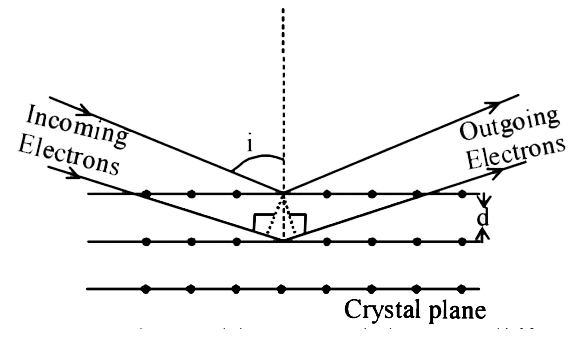
If a strong diffraction peak is observed when electrons are incident at an angle i from the normal to the crystal planes with distance d between them (see fig) de Brogle wavelength λdB of electrons can be calculated by the relationship (n is an intenger)View SolutionQuestion 168
Wave property of electron implies that they will show diffraction effected . Davisson and Germer demonstrated this by diffracting electron from crystals . The law governing the diffraction from a crystals is obtained by requiring that electron waves reflected from the planes of atoms in a crystal inter fere constructiely

If a strong diffraction peak is observed when electrons are incident at an angle i from the normal to the crystal planes with distance d between them (see fig) de Brogle wavelength λdB of electrons can be calculated by the relationship (n is an intenger)View SolutionQuestion 169
In an experiment, electrons are made to pass through a narrow slit of width d comparable to their de Broglie wavelength. They are detected on a screen at a distance D from the slit (see figure).<br>
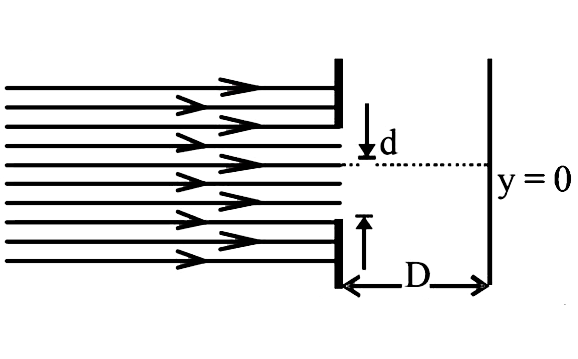
Which of the following graphs can be expected to represent the number of electrons N detected as a function of the detector position y (y=0 corresponds to the middle of the slit ).View SolutionQuestion 170
A silver of radius 1cm and work function 4.7eV is suspended from an insulating thread in freepace. It is under continuous illumination of 200nm wavelength light. As photoelectron are emitted the sphere gas charged and acquired a potential . The maximum number of photoelectron emitted from the sphere is A×10e(where1<A<10) The value of z is View SolutionQuestion 171
When a certain metallic surface is illuminated with monochromatic light of wavelength λ, the stopping potential for photoelectric current is 3V0 and when the same surface is illuminated with light of wavelength 2λ, the stopping potential is V0. The threshold wavelength of this surface for photoelectrice effect isView SolutionQuestion 174
A parallel beam of monochromatic light of wavelength 600nm is incident on a totally reflecting plane mirror. The angle of incident is 60∘ and the number of photon striking the mirror per second is 2.0×1019. The force exerted by the light beam on the mirror is a×10−8N. what is the integer value of a? Given h=6.6×10−34JsView SolutionQuestion 175
A proton is fired from very far away towards a nucleus with charge Q = 120 e, where e is the electronic charge. It makes a closest approach of 10fm to the nucleus. The de - Broglie wavelength (in units of fm) of the proton at its start is take the proton mass, mp=5/3×10−27kg,h/e=4.2×10−15J−s/C, 14πε0=9×109m/F,1fm=10−15. View SolutionQuestion 178
Assertion: Light of frequency 1.5 times the threshold frequency is incident on photo-senstive material. If the frequency is halved and intensity is doubled, the photo current remains unchanged.
Reason: The photo electric current varies directely with the intensity of light and frequncy of light.View SolutionQuestion 186
This question has statement - 1 and statement - 2 of the four choice given after the statements choose the one that best describes the two statements
statement - 1 : A metallic surface is irradiated by a monochromatic light of frequency v>v0 (the threshold frequency). The maximum kinetic energy and the stopping potential are KmaxandV0 respectively if the frequency incident on the surface is doubled , both the KmaxandV0 are also doubled
statement - 2 : The maximum kinetic energy and the stopping potential of photoelectron emitted from a surface are linearly dependent on the frequency of incident light View SolutionQuestion 187
Statement - 1 : When ultraviolet light is incident on a photocell , its stopping potential is V0 and the maximum kinetic energy of the photoelectrons is Kmax when the ultraviolet light is replaces by X- rays both V0andKmaxincrease
Statement - 2 : Photoelectrons are emitted with speeds ranging from zero to a maximum value became of the range of frequencies present in the incident light View SolutionQuestion 189
Statement-1: A small metal ball is suspended in a uniform electric field with an insulated thread. If high energy X-rays beam falls on the ball, the ball will be declected in the electric field.
Statement-2: X-rays emit photoelectrons and metal and metal becomes negatively charged.View SolutionQuestion 190
Statement-1: An electron of mass m when accelerated through a potential difference V, has de-broglie wavelength λ. The de-broglie wavelength associated with a proton of mass M accelerated through the same potential difference will be λ√M/m.
Statement-2: de-broglie wavelength
λ=h√2meV. View Solution


